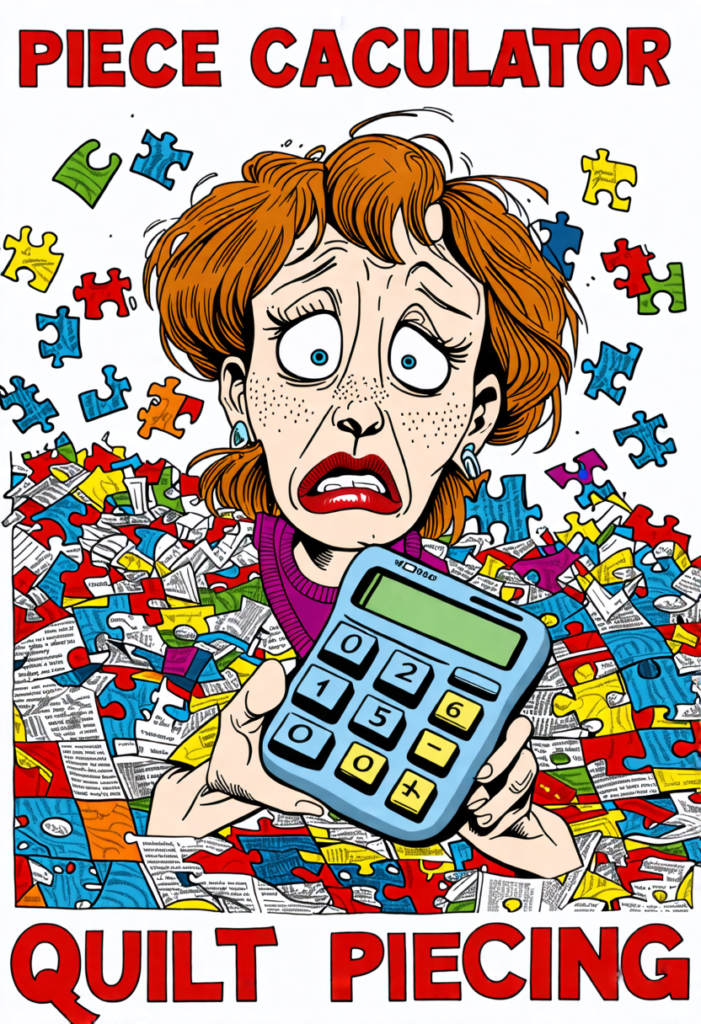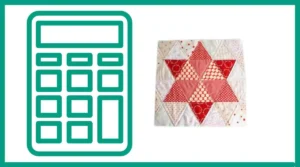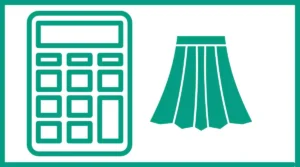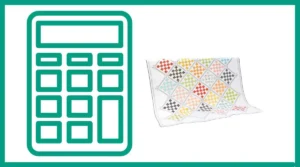Piece Calculator – Quilt Piecing
Results:
0 pieces 0 inches wide by 0 inches long
0 pieces 0 inches wide by 0 inches long
Understanding the Piece Calculator
The Piece Calculator is a user-friendly online tool that takes the guesswork out of fabric cutting for quilt piecing. It allows quilters to input the dimensions of their fabric and the desired size of their quilt pieces. With this information, the calculator provides two results: the number of pieces that can be cut with the width oriented one way, and the number of pieces that can be cut with the width oriented the other way.
Key Features of the Piece Calculator
- Input fields for piece width and height
- Input fields for fabric width and height
- Instant calculation of results
- Two orientation options for maximum efficiency
How to Use the Piece Calculator
Using the Piece Calculator is straightforward and requires just a few simple steps:
- Enter the width of your desired quilt piece in inches.
- Enter the height of your desired quilt piece in inches.
- Input the width of your fabric in inches.
- Input the height of your fabric in inches.
- Click the “Calculate” button.
The calculator will then display two results:
- The number of pieces that can be cut with the original width and height orientation
- The number of pieces that can be cut with the width and height swapped
This dual result allows quilters to determine the most efficient way to cut their fabric, minimizing waste and maximizing the number of pieces they can obtain.
The Importance of Accurate Measurements
For the Piece Calculator to provide accurate results, it’s crucial to input precise measurements. Here are some tips for ensuring accuracy:
- Use a reliable measuring tool, such as a quilting ruler or tape measure.
- Measure your fabric width from selvage to selvage.
- For the fabric height, measure from the cut edge to the desired length.
- When measuring your desired piece size, consider any seam allowances you’ll need.
Remember, even small discrepancies in measurements can lead to significant differences in the final piece count, especially when working with larger quantities of fabric.
Practical Examples of Using the Piece Calculator
To better understand how the Piece Calculator can be used in real-world quilting scenarios, let’s look at two examples:
Example 1: Cutting Squares for a Patchwork Quilt
Suppose you’re making a patchwork quilt using 4-inch squares. You have a piece of fabric that measures 44 inches wide (a common width for quilting cotton) and 36 inches long. Here’s how you would use the Piece Calculator:
- Enter 4 in the “Piece width” field
- Enter 4 in the “Piece height” field
- Enter 44 in the “Fabric width” field
- Enter 36 in the “Fabric height” field
- Click “Calculate”
The calculator would show:
- 99 pieces 4 inches wide by 4 inches long
- 99 pieces 4 inches wide by 4 inches long
In this case, because the pieces are square, both orientations yield the same result. You can cut 99 squares from your fabric.
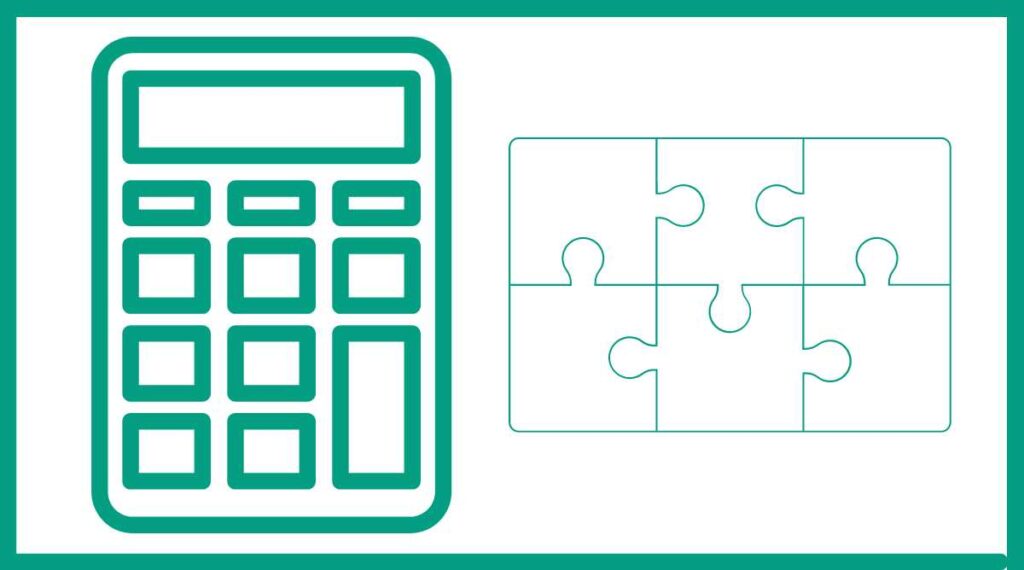
Example 2: Cutting Rectangles for a Strip Quilt
Now, let’s say you’re making a strip quilt and need rectangles that are 2 inches by 5 inches. Your fabric is 42 inches wide and 54 inches long. Here’s how you’d use the calculator:
- Enter 2 in the “Piece width” field
- Enter 5 in the “Piece height” field
- Enter 42 in the “Fabric width” field
- Enter 54 in the “Fabric height” field
- Click “Calculate”
The calculator would show:
- 210 pieces 2 inches wide by 5 inches long
- 231 pieces 5 inches wide by 2 inches long
In this case, you can see that rotating the orientation of your cuts allows you to get 21 more pieces from the same fabric. This information helps you make the most efficient use of your material.
Benefits of Using the Piece Calculator
Time-Saving
One of the primary advantages of using the Piece Calculator is the time it saves. Instead of manually calculating or guessing how many pieces you can cut, you get an instant, accurate result. This allows you to spend more time on the creative aspects of quilting and less time on math.
Fabric Efficiency
By providing two orientation options, the Piece Calculator helps you maximize the use of your fabric. This is particularly beneficial when working with expensive or limited fabrics, as it helps reduce waste and stretch your materials further.
Project Planning
Knowing exactly how many pieces you can cut from your fabric allows for better project planning. You can determine if you have enough fabric for your intended design or if you need to purchase more. This prevents the frustration of running short on materials mid-project.
Cost Estimation
For quilters who sell their work, the Piece Calculator can be a valuable tool for estimating costs. By quickly determining how much fabric is needed for a specific number of pieces, you can more accurately price your quilts or quilt services.
Tips for Making the Most of the Piece Calculator
- Always round down: The calculator provides whole numbers, so if you get a result like 10.8 pieces, always round down to 10 to ensure you have enough fabric.
- Consider seam allowances: Remember that the calculator doesn’t account for seam allowances. If you need a 1/4 inch seam allowance on all sides, add 1/2 inch to both the width and height of your piece measurements.
- Factor in fabric shrinkage: If you plan to pre-wash your fabric, account for potential shrinkage by adding an extra inch or two to your fabric measurements.
- Use for scrap management: The Piece Calculator can be helpful for using up fabric scraps. Input the dimensions of your scrap pieces to see how many smaller pieces you can cut from them.
- Experiment with different sizes: If you’re flexible with your piece sizes, try inputting different dimensions to see how they affect the number of pieces you can cut. This can help you optimize your design for the fabric you have available. You might need half squares and triangles for your quilt project.
Limitations of the Piece Calculator
While the Piece Calculator is a powerful tool, it’s important to understand its limitations:
- It assumes perfectly rectangular fabric and pieces. In reality, fabric may have slight irregularities.
- The calculator doesn’t account for directional prints. If your fabric has a pattern that needs to be oriented a certain way, you may not be able to use all the pieces the calculator suggests.
- It doesn’t factor in cutting mistakes or fabric imperfections that might render some pieces unusable.
- The tool doesn’t consider the width of your cutting tool or rotary cutter, which may slightly reduce the number of pieces you can actually cut.
